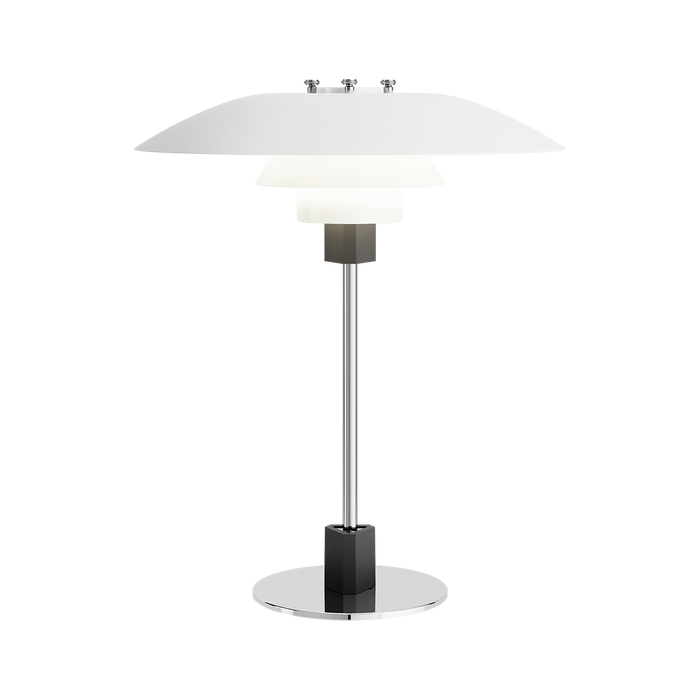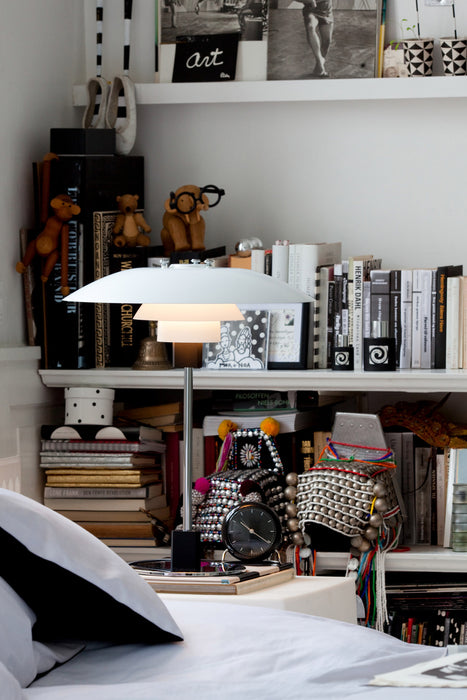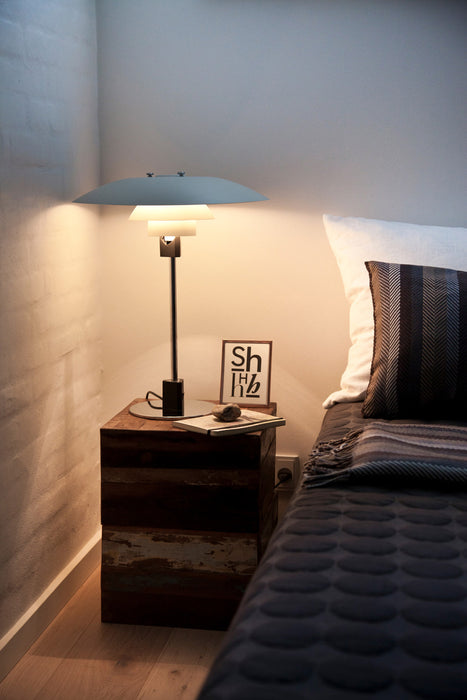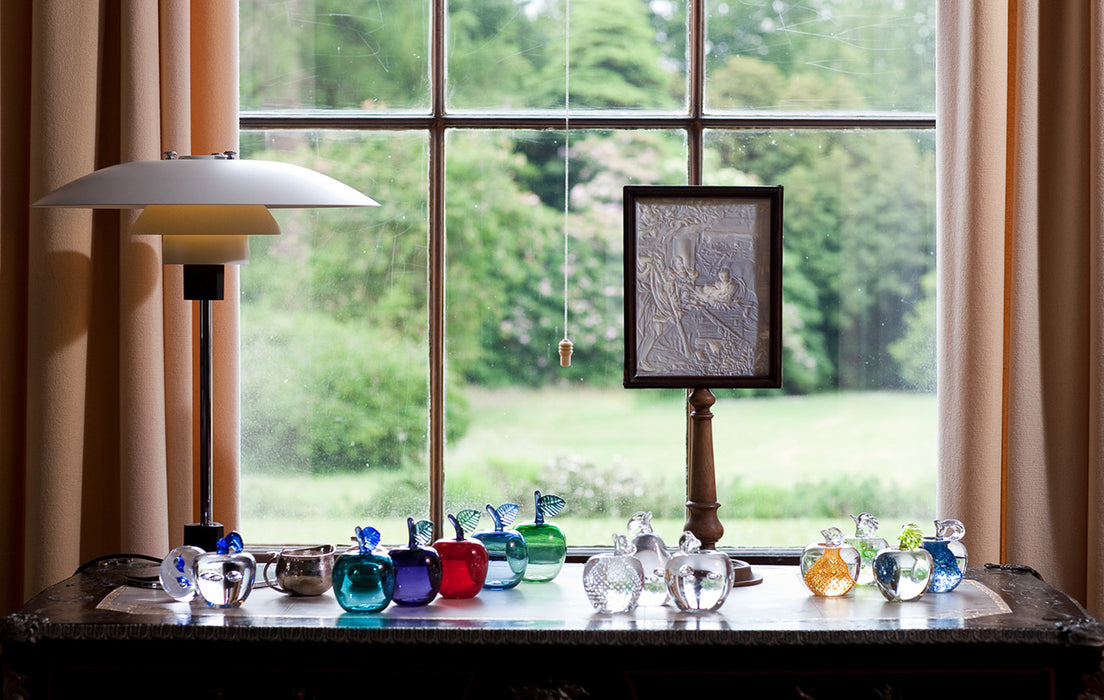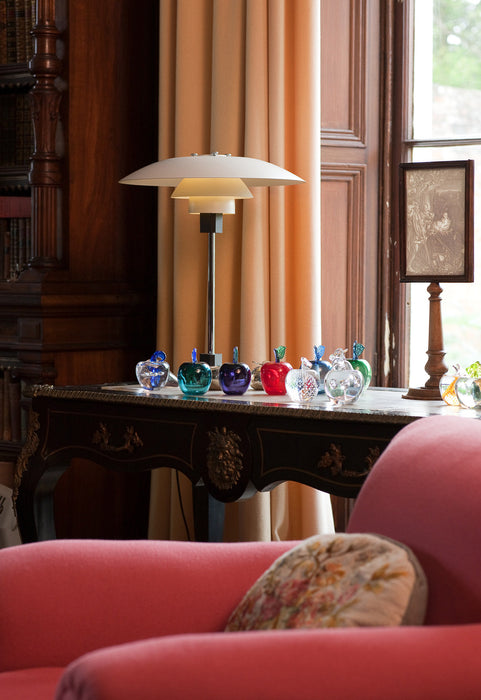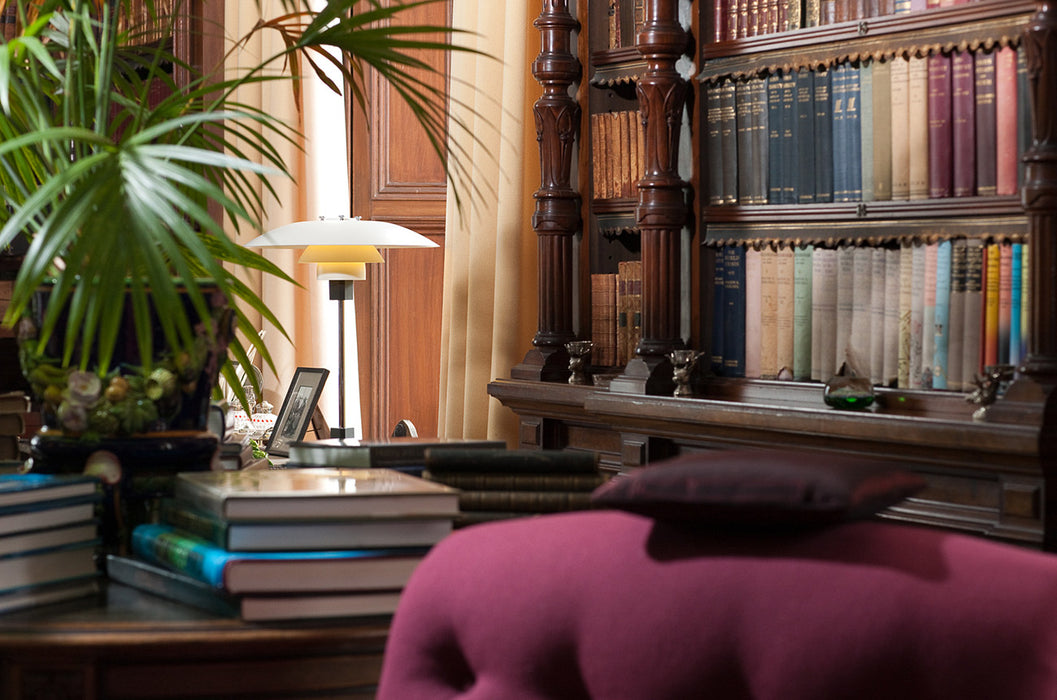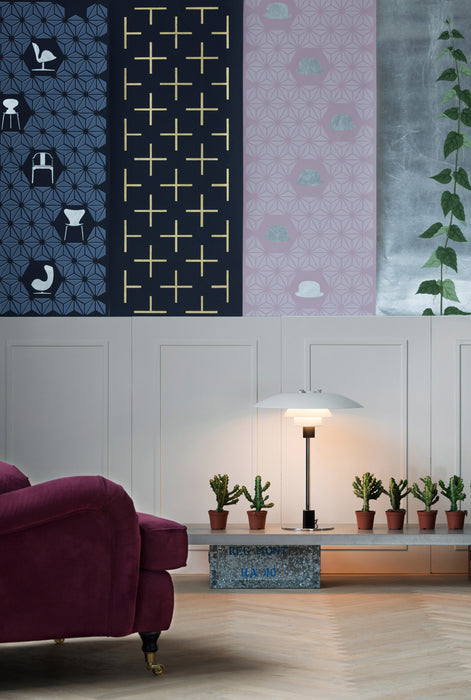Poul Henningsen designed the three-shade system in 1925-1926. Together with Louis Poulsen, PH designed the first lamps using this system for an exhibition in Paris. Their collaboration continued until his death in 1967. Throughout his life, PH sought to create direct, glare-free lighting where it was most needed. He also used incandescent bulbs as a light source to create soft shadows.
The PH 4/3 Table Lamp is part of the three-shade family, which currently comprises 30 lights, including three for outdoor use. PH therefore didn't simply design one light but an entire system; over the years, around 1,000 different models have been created. This wide selection included table lamps, floor lamps, and wall lights, as well as a series of chandeliers that were very popular in the 1930s for illuminating private homes with high ceilings. There were endless possible combinations. The lights came in different colors and sizes. The first shades were made of metal, with an inner surface painted white, gold, or silver, depending on whether a diffused, warm, or cool light was desired. Later, glass began to be used for the three-shade system. In addition to projecting light downward, the glass lamps illuminated the rest of the room.
PH was the first to apply a scientific approach to light and base it on the Lituus curve. By using a design based on the Lituus curve, he achieved an even distribution of light across the entire curve of the screen. This even distribution, along with diffuse reflection through the glass, made it possible to control glare and shadows. Each screen reduces the amount of light equally thanks to its distance from the light source.
The PH light model number refers to the size of the shade. Each upper shade had a corresponding set of middle and lower shades. In "pure" models, such as the 2/2, the upper shade measures approximately 20 cm, with corresponding lower shades. The PH 4/3 Table Lamp consists of an upper shade of approximately 40 cm, but uses lower shades from the 3/3 model. These "hybrid" models were created to address the desire to hang lamps from the ceiling at a lower height. The system was also used in table lamps, floor lamps, and wall lights. The PH 4/3 Table Lamp, as we know it today, was born in 1966.
*This product is usually in stock and delivers within 3 to 5 days. Occasionally, some versions may require a delivery time of several weeks. If this is the case, we will notify you immediately.
Dimensiones y Materiales
| Finish |
White, powder-coated. High-gloss chrome-plated brass. |
|---|---|
| Materials |
Shades: Spun-cast aluminum. Base: High-gloss chrome-plated brass. Arm: High-gloss chrome-plated brass and steel. Triangular piece: Injection-molded, sandblasted, black Bakelite. |
| Bulb type | 1x100W E27 (not included) |
| Dimensions |
Screen width : ø45 cm Base width : ø21 cm Height : 54 cm |
| Origin | Dinamarca |
|---|


